#harold harefoot
Explore tagged Tumblr posts
Text



𝐏𝐘𝐑𝐘 𝐊𝐀𝐇𝐊𝐎𝐍𝐄𝐍 𝐀𝐒 𝐇𝐀𝐑𝐎𝐋𝐃 𝐇𝐀𝐑𝐄𝐅𝐎𝐎𝐓
in vikings: valhalla season three. episode 7
#weloveperioddrama#perioddramacentral#pyry kähkönen#pyry kahkonen#harold harefoot#vikings valhalla#vikingsedit#gif show: vikings valhalla.#cali gifs.#a silver wig and for me he is rhaegar
26 notes
·
View notes
Text



PYRY KÄHKÖNEN as HARALD HAREFOOT Vikings: Valhalla 3x03
#pyry kahkonen#pyry kähkönen#pyry kähkönen gifs#pyry kahkonen gifs#vikings: valhalla#valhalla#gifs#valhallacentral#vikings valhalla#harald harefoot#perioddramacentral#perioddramaedit#mine#harold harefoot
127 notes
·
View notes
Text

Okay, but this?? This moment from season 1?? That shit hits different after season 3, oh my god
18 notes
·
View notes
Text
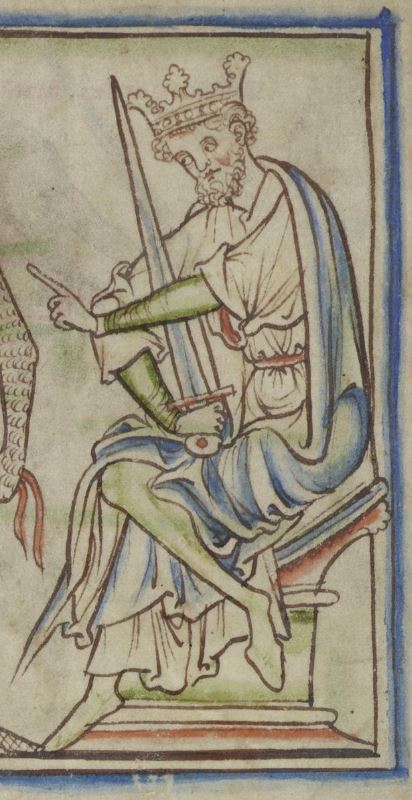

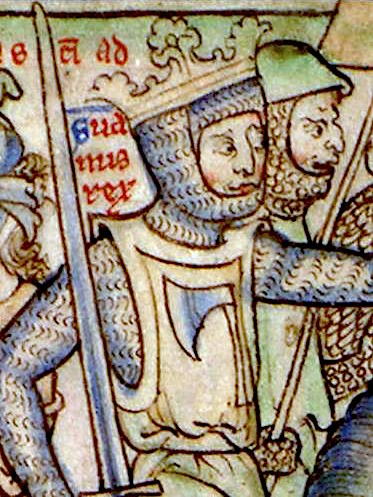
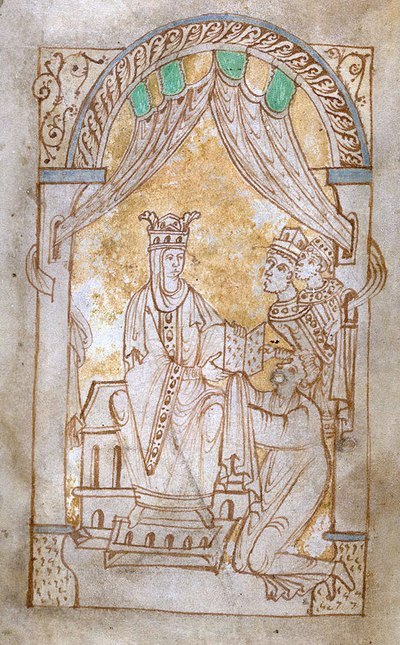


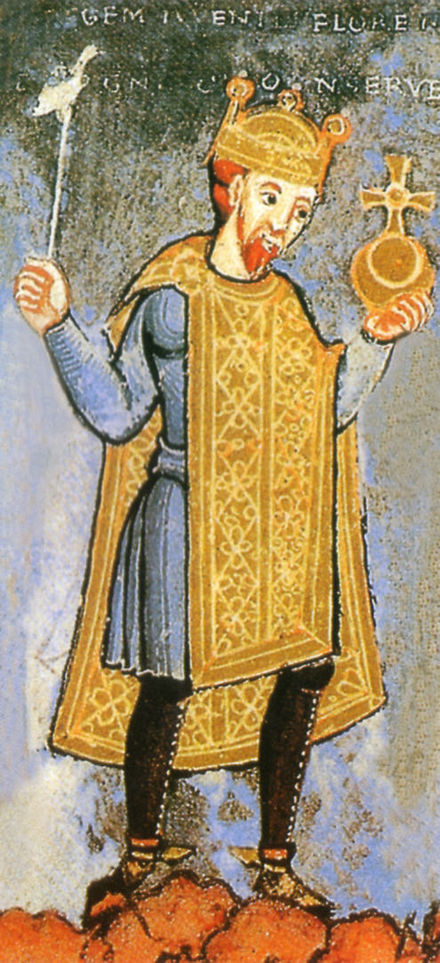
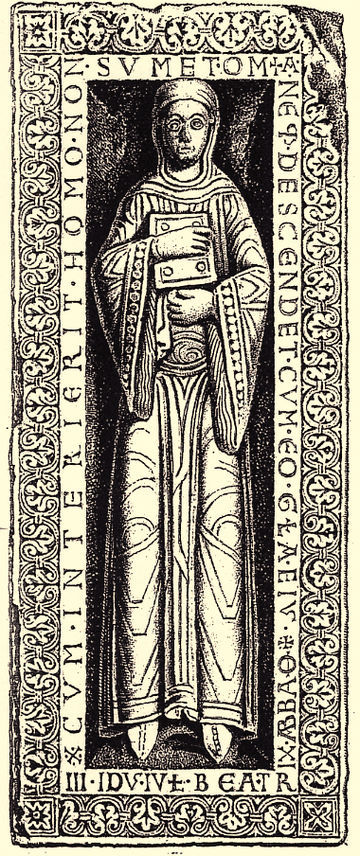


The Bastard Kings and their families
This is series of posts are complementary to this historical parallels post from the JON SNOW FORTNIGHT EVENT, and it's purpouse to discover the lives of medieval bastard kings, and the following posts are meant to collect portraits of those kings and their close relatives.
In many cases it's difficult to find contemporary art of their period, so some of the portrayals are subsequent.
1) Harold I of England (?- 1040), son of Knut the Great and his wife Ælfgifu of Northampton
2) Knut the Great (c. 990 – 1035), son of Sweyn Forkbeard and his wife Świętosława of Poland
3) Sweyn Forkbeard (963 – 1014), son Knut Danaást or Harald Bluetooth and his wife Tove or Gunhild
4) Emma of Normandy (c. 984 –1052), daughter of Richard I of Normandy and his wife Gunnor
5) Harthacnut/ Knut III of Denmark (c. 1018 – 1042), son of Knut the Great and his wife Emma of Normandy
6) Gunhilda of Denmark (c. 1020 – 1038), daughter of Knut the Great and his wife Emma of Normandy
7) Holy Roman Emperor Henry III (1016 -1056), son of Holy Roman Emperor Conrad II and his wife Gisela of Swabia
8) Beatrice of Franconia (1037 – 13 July 1061), daughter of Holy Roman Emperor Henry III and his wife Gunhilda of Denmark
9) Edward the Confessor (c. 1003 – 1066), son of Æthelred II of England and his wife Emma of Normandy
10) Ælfred Æþeling (c. 1012–1036), son of Æthelred II of England and his wife Emma of Normandy
#jonsnowfortnightevent2023#canonjonsnow#asoiaf#a song of ice and fire#day 10#echoes of the past#Beatrice of Quedlinburg#historical parallels#medieval bastard kings#bastard kings and their families#harold i of england#harold harefoot#cnut the great#knut the great#sweyn forkbeard#emma of normandy#harthacnut#cnut iii of denmark#Gunhilda of Denmark#Beatrice of Franconia#Beatrice I of Quedlinburg#holy roman emperor henry iii#henry the black#edward the confessor#Ælfred Æþeling#alfred aetheling
17 notes
·
View notes
Text

Day 29: Sun - Harold Knutsson 💛💛
#jenstober23#harold harefoot#harold knutsson#king of england#medieval england#vikings#sun#11th century#history art#traditional art#twttwba#scandinavian tag#saxon tag#inktober#inktober 2023#drawtober#drawtober 2023#artober#artober 2023#witchtober#witchtober 2023#day 29
4 notes
·
View notes
Text


These reactions are fucking hilarious




91 notes
·
View notes
Text
just finished s3 of valhalla yesterday. thoughts:
- the thing i was most afraid of was a bad ending. but thankfully, valhalla actually had a wonderful ending, and i am very satisifed with it.
- the season was AMAZING, i'd say it is easily the best season. it had so many adventures and many moments that made me pause the show 'cause i could not believe they happened. and my favorite thing, it was very colorful and had very wholesome moments, but a good amount of sad moments as well. which i also loved.
- the villains were the best!! i loved every single one
- i loved all of the conflicts as well. they kept me on my toes the whole season
- i would've preferred more seasons of course, at the very least one more. so that we could see leif and freidys find the golden land, reunite with harald ii and also for harald to meet him because that is his son, after all. and of course, for us to see harald and freydis rule together at some point. but i guess they just didn't have the same goals, and that's okay.
- queen aelfgigu shouldn't have died but i also understand how it felt necessary for the plot. so i'll let it slide.
- the whole dynamic of king canute's sons wanting the throne and the issues with duke william had me wanting a spinoff with william, emma's sons and canute's sons
- in general, it was a fantastic season. i enjoyed every bit of it and i have many more thoughts, but all i have to say is:
thank you to the entire cast and crew of vikings: valhalla. you did a wonderful job in every season and i wish you would've stayed a little bit longer. at the very least, one more season. but it was a really good ending, despite the fact that we could've had a little more.
btw, i do not forgive y'all for killing off kaysan, batu and dorn. one of the most painfully devastating things i've ever had to watch❤️🩹
ALSO, I NEED HAROLD HAREFOOT FICS. WHERE ARE THEY?
#vikings valhalla#vikings#king canute#harald sigurdsson#harald hardrada#leif eriksson#leif the lucky#freydis eriksdotter#queen emma#queen emma of normandy#erik the red#harald ii#earl godwin#prince harold harefoot#prince edward#duke william#prince alfred#emperor romanos#kaysan#batu#dorn#netflix valhalla#netflix
32 notes
·
View notes
Text
what the fuck i was trying to look up aelfgifu of northampton, what kind of mad cnut cunt would want to look up "elf gifs"? WHY WOULD YOU SHOW ME ELF GIFS AND NOT ELFGIFU?? FUCK YOU!!!!
#this is like when my phone INSISTED that i meant 'antipodes' not 'antipopes'. SORRY FOR HAVING THE RIGHT WEIRD PRIORITIES I GUESS??#i am sure MANY people message about antipopes EVERY DAMN DAY actually and they are being OPPRESSED by autocorrect.#AS IS ELFGIFU THE FAMED MOTHER OF HAROLD HAREFOOT.#the anglo-saxon woman about whom i was trying to find a book. (pls rec me any you know of tumblrfrens! non-fiction pls!)#i just want to know what's going on with her and emma of normandy who the search didn't try to autocorrect to fucking ELF GIFS.#it's not that i think emma of normandy could herself somehow be behind this (beyond the) grave injustice but -#anyway this all sounds like an absolute hot mess of a succession crisis and you know how i feel about those things (aroused)#so i need to Learn About It but obviously i would prefer to do this via books about scheming queens (also arousing)#GOD DAMMNIT#history fandom#dead queens fandom
2 notes
·
View notes
Photo

Aelfgifu of Northampton
Aelfgifu of Northampton (fl. 1013-1037) was an English noble who married the English and Danish king Cnut (r. 1016-1035) and was the mother of the English king Harold I Harefoot (r. 1035-1040). Aelfgifu reached the height of her influence in the 1030s, when she governed Norway with her older son, Sweyn, and then secured Harold‘s accession to the English throne.
Early Life & Marriage to Cnut
Aelfgifu's year of birth is unknown, but she was the daughter of a prominent English ealdorman named Aelfhelm. Aelfhelm ruled the southern portions of Northumbria from 994 to 1006, during the long reign of Aethelred the Unready (r. 978-1013 and 1014-16), which was plagued by Viking invasions. In 1006, Aelfhelm was assassinated, and two of his sons were blinded on the orders of the king. Aelfgifu is not known to have endured the same kind of violence as her father and brothers, although her circumstances immediately following the upheaval are unclear.
When Sweyn Forkbeard of Denmark (r. 986-1014) invaded England in 1013 in a war of conquest, he sought out Aelfgifu as a match for his son, Cnut. Aelfgifu and Cnut most likely married sometime in 1013 or very early 1014. As a result of the Danish conquest of England, Aethelred was driven out and Sweyn became England's next king.
King Sweyn died suddenly on 3 February 1014. His Viking fleet proclaimed Cnut king, and Aelfgifu may have expected to rise even further in status as the new king's wife, but not everyone was willing to accept her and Cnut. Some of the English nobles recalled Aethelred, wishing to make him king again rather than accept Cnut as Sweyn's successor.
Continue reading...
54 notes
·
View notes
Text
im sorry but edmund ironside, edward the confessor, harthecnut, and harold harefoot all being half brothers of one another in some fucked up daisy chain family situation is so funny to me. why aren't there more period dramas about this era?? i need a sitcom stat
#medieval history#early middle ages#the 11th century was such a mess#i love it#i hope they had the most fucked up family reunion of all time at least once#i think the closest they got was when alfred aetheling got merked
209 notes
·
View notes
Text
[Emma of Normandy] was one of the nine known children of Richard I of Normandy; almost certainly his daughter by his Danish-descended wife Gunnor and thus the sister of Richard II, who became duke of Normandy after his father in 996, and of Robert Archbishop of Rouen. She was the aunt of dukes Richard III and Robert and great-aunt of Duke William, better known in England as the Conqueror.
In 1002 she came to England to marry King Athelred II, the Unready. Emma was not the English king’s first wife. He had been married before, once if not twice, and already had a large family of six sons and at least four daughters. At the time of the marriage Emma’s French/Norman name was changed for an English one, Aelfgifu. She bore Athelred three children: two sons and a daughter, Edward, the future Confessor, Alfred and Godgifu.
Emma’s marriage took place against the background of the Scandinavian attacks which plagued Athelred’s England. These culminated in Swein of Denmark’s conquest of England in 1013. Emma, her sons and later her husband then took refuge at the Norman court with her brother Richard II. After Swein’s death early in 1014, Athelred returned to rule briefly until his own death in 1016. An armed struggle for the throne ensued between Athelred’s eldest surviving son, Emma’s stepson, Edmund Ironside, and Swein’s son, Cnut. Fierce fighting, the division of the kingdom, then Edmund’s death made Cnut king of all England by the end of 1016.
In 1017 Cnut, the Danish conqueror, married Emma, Athelred’s widow. By this second husband she had two more children, a son Harthacnut and a daughter, Gunnhild, who in 1036 married Henry III, then king of the Romans, future emperor. Again Emma was not a first wife. Cnut already had a union with an English noble woman, Aelfgifu, daughter of a former ealdorman of York, a union which his marriage to Emma [may or may not] have terminated. Before or after 1016 Aelfgifu bore him two sons, Swein and Harold Harefoot. Cnut’s reign is the second stage of Emma’s career in England, and is marked by most references to her in charters and similar documents.
The death of Cnut late in 1035 put an end to this phase and inaugurated a third, dominated by questions concerning the succession to his several kingdoms of Denmark, Norway and England, particularly concerning that to the English throne. During his lifetime Cnut had sent his son Swein and Swein’s mother Aelfgifu to act as regents in Norway, and dispatched Harthacnut to be regent in Denmark. At the time of his father’s death, Harold Harefoot was the only son in England. From late 1035 until 1037 the English throne was once again at issue. Harthacnut remained in Denmark, whilst Harold collected support in England. At first Emma remained at Winchester, with Cnut’s military household and in possession of the royal treasure; Godwine earl of Wessex was close to her. In 1036 her sons by Athelred, Edward and Alfred, returned to England from their refuge in Normandy. Alfred was captured, blinded and died in circumstances which left suspicion attached to both Godwine and Harold. Edward, who had gone to his mother at Winchester, now returned quickly to Normandy. In 1037 Emma’s stepson Harold became king of the English and she was exiled to Flanders; there she lived, enjoying the hospitality of Count Baldwin, until 1039.
In that year her son Harthacnut joined her, and in 1040, on the death of Harold Harefoot, mother and son, accompanied by a fleet, returned to England where Harthacnut was accepted as king. Emma now entered the final stage of her life, as queen-mother. In 1041 Edward was recalled from Normandy, and associated in some way in rule; after Harthacnut’s premature death in 1042, he became king in turn. A year later, in 1043, Edward deprived his mother of much treasure and land. Although Emma was restored to court by 1044, little or no evidence has survived of her activity after this and she disappears from view after 1045. Emma probably lived the rest of her life at Winchester, where she died on 6 March 1052. She was buried there in the Old Minster alongside her second husband, Cnut.
— Pauline Stafford, Queen Emma and Queen Edith: Queenship and Women's Power in Eleventh-Century England
#historicwomendaily#emma of normandy#11th century#english history#anglo-saxons#women in history#my post#king cnut#i LOVE mini-biographies like this <3
18 notes
·
View notes
Text




𝐏𝐲𝐫𝐲 𝐊𝐚𝐡𝐤𝐨𝐧𝐞𝐧 𝐚𝐬 𝐇𝐚𝐫𝐨𝐥𝐝 𝐇𝐚𝐫𝐞𝐟𝐨𝐨𝐭
in Vikings: Valhalla season 3.
#Pyry Kähkönen#pyry kahkonen#vikings valhalla#vikingsedit#harold harefoot#cali gifs.#gif show: vikings valhalla.
85 notes
·
View notes
Text

Laura Berlin as Emma in "Vikings: Valhalla"
Emma of Normandy (referred to as Ælfgifu in royal documents c. 984 – 6 March 1052) was a Norman-born noblewoman who became the English, Danish and Norwegian queen through her marriages to the Anglo-Saxon King Æthelred the Unready and then the Danish king Cnut the Great.
A daughter of the Norman ruler Richard the Fearless and Gunnor, she was Queen of the English during her marriage to King Æthelred from 1002 to 1016, except during a brief interruption in 1013–14 when the Danish king Sweyn Forkbeard occupied the English throne. Æthelred died in 1016, and Emma married Sweyn's son Cnut. As Cnut's wife, she was Queen of England from their marriage in 1017, Queen of Denmark from 1018, and Queen of Norway from 1028 until Cnut died in 1035.
After Cnut's death, Emma continued to participate in politics during the reigns of her sons by each husband, Harthacnut and Edward the Confessor. In 1035 when her second husband Cnut died and was succeeded by their son Harthacnut, who was in Denmark at the time, Emma was designated to act as his regent until his return, which she did in rivalry with Harold Harefoot. Emma is the central figure within the Encomium Emmae Reginae, a critical source for the history of early-11th-century English politics.
She was instrumental in orchestrating King Harthacnut into naming his half-brother Edward as his heir, thus ensuing one of her sons would remain king.
After her death in 1052, Emma was interred alongside Cnut and Harthacnut in the Old Minster, Winchester, before being transferred to the new cathedral built after the Norman Conquest. During the English Civil War (1642–1651), their remains were disinterred and scattered about the Cathedral floor by parliamentary forces. The jumbled bones were later re-interred.
3 notes
·
View notes
Text
Wrote a thing inspired by Vikings Valhalla S3E7 when Knut gathers all his potential successors into one room! The tension is rife and the meta historical foreboding was insane.
#vikings valhalla#valhalla spoilers#knut the great#king canute#emma of normandy#godwin of wessex#earl godwin#aelfgifu of northampton#harald harefoot#harold harefoot#svein knutsson#magnus the good#magnus haraldsson#edward the confessor#alfred aetheling#harthacnut#fanfic#my writing
4 notes
·
View notes
Note
Also Harold Harefoot from season 3, if you have the time? He was a pleasant surprise!
you got it! I had to throw in godwin too :P
1 note
·
View note
Text

REVIEW
The Sea’s Edge by Garth Pettersen
The Atheling Chronicles #4
The saga of Harald Harefoot son of King Cnute continues with diplomacy, battle, and beheadings all part of the story. Great addition to the series that made me thankful I did not live in the early eleventh century.
What I liked:
* Harald: loving husband, obedient and loving son, hates to leave his holding and his wife for diplomatic work, does his duty though he might question the rightness of some things he is required to do
* Selia: a loving wife and good woman, recently miscarried, postpartum depression, good friend, empathetic, strong, and wise
* Gwyn: Friend of Harald’s, strong fighter, loving husband, father, fun loving, talkative
* Gudrun: wife to Gwyn, mother of Meleri, and friend of Selia’s
* Trygve: a wandering minstrel and storyteller, saves a child’s life, accused of stealing, a good friend
* The dual storylines with Selia at home and Harald traveling
* The commitment Harald and Selia have for one another
* That the “enemy” was actually more likeable than the allies King Cnute was creating
* The plot, pacing, setting, era, and writing
* Being glad I did not live in this time period
* All of it really except…
What I didn’t like:
* Who and what I was meant not to like
* Thinking about how cutthroat politics were and no doubt still are
* Knowing that good men sometimes die, and lesser men thrive
Did I enjoy this book? Yes
Would I read more by this author? Yes
Thank you to the author for the ARC – This is my honest review.
4 Stars
BLURB
1030 C.E.: Harald, the second son of King Cnute—ruler of Engla-lond, Danmark, and Norvegr—with his wife Selia, attempt to live as landholders in Mercia, away from the constraint and intrigues of his father's court. However, on a rare visit, Cnute tells Harald he's being sent to the Kingdom of Dublin to meet with their Norse-Irish allies. Harald’s mission is to coordinate an invasion of the northern Welsh kingdom of Gwynedd to replace King Rhydderch who is growing too powerful on England’s borders. Harald is reluctant to be involved in his father-king's affairs of state, and not just because his beloved wife, Selia, is unwell. Harald cannot refuse to go and assures Selia he will not have to take part in the fighting. Once on his journey, Harold is not drawn to his Norse-Irish allies but comes to respect the foe he must kill. Will Harald carry out his father-king’s commands to unseat a strong and just rule, or will he tread a more righteous road, which will destroy the life he and Selia have built together?
0 notes